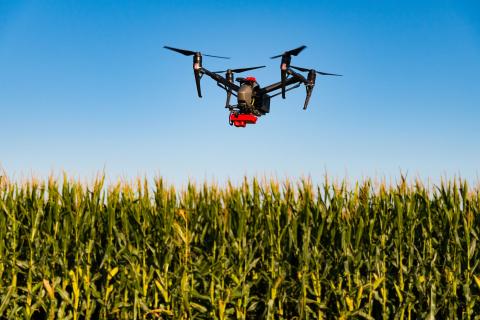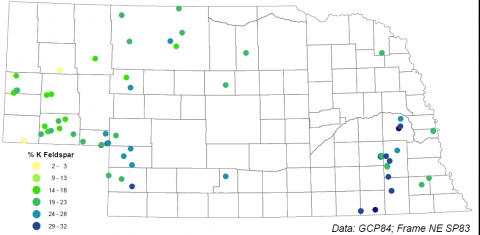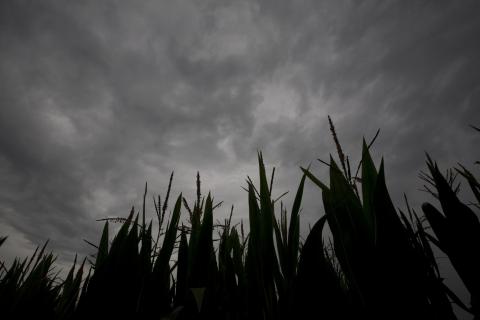Seeding Recommendations for Irrigated Soybean and Dryland Corn in West-Central Nebraska
January 23, 2020
Continuous corn is the most common irrigated crop sequence in southwest Nebraska. Although rotating to other crops, such as soybeans, can mitigate some production issues of continuous corn and often boost the next year’s corn yield, larger adoption of soybean has not readily occurred in this area.
$1.2 Million Grant to Help Corn and Wheat Growers Manage Nitrogen Fertilizer Application
January 13, 2020
Corn and wheat growers across Nebraska will be able to gain hands-on experience with cutting-edge technologies that will allow them to more precisely identify the amount of nitrogen fertilizer their crops need, while preventing excess nitrates from ending up in Nebraska’s water supply.
Soil Potassium Availability: The Roles of Manure, Irrigation and Potassium Feldspar
December 17, 2019
Why do Nebraska soils tend to have high potassium (K) availability, even with high yields and often without fertilizer K application? Why are yield responses to fertilizer-K infrequent?
Impact of Hybrid Selection, Planting Date and Seeding Rates on Dryland Corn in Western Nebraska
December 17, 2019
To study the effects of several agronomic practices on corn yield in western Nebraska, a strip trial was conducted at the Henry J. Stumpf International Wheat Center at Grant during the 2018 and 2019 growing seasons.
Corn and Sorghum Harvests Nearly In
December 2, 2019
Nebraska's corn harvest was 96% complete, near 99% for both last year and the five-year average. Sorghum harvest was 97% done, near 99% for both last year and the average.
New USDA Harvest Projections Down from 2018
November 8, 2019
Based on November 1 conditions, Nebraska's 2019 corn crop is forecast at 1.77 billion bushels, down 1% from 2018. Soybean production is forecast at 282 million bushels, down 13%.
Corn and Clouds: “…from both sides now…”
November 6, 2019
Solar radiation and temperature data for the third week of August in central Nebraska indicates it likely contributed to the lower-than-expected yields being reported by many growers this year.
TAPS Banquet to Celebrate 2019 Competitions
November 5, 2019
With a record-setting wet growing season and some unique differences in management decisions by competitors, this year’s Testing Ag Performance Solutions (TAPS) awards banquet is sure to be interesting.





